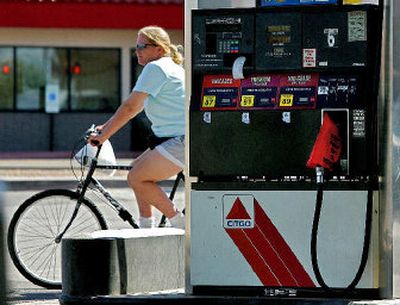Long-term oil outlook brightens

The post-Hurricane Katrina petroleum-supply outlook improved somewhat on Friday as U.S. and European governments agreed to release 2 million barrels a day of oil and refined products from their reserves.
The announcement by the International Energy Agency was made after futures markets had closed. But prices fell sharply on reports that it was coming and as pipelines that distribute oil and gasoline from the Gulf Coast returned to high levels of service.
Still, the immediately available supply of energy for automobiles, homes and airlines in East Coast and Midwest markets tightened. Some 1.8 million barrels a day of U.S. refining capacity remained shut down and it will be weeks before the extra gasoline from Europe arrives. Pump prices were above $3 a gallon in many places and motorists have been urged to conserve fuel by everyone from President Bush to Exxon Mobil Corp.
Jeff Miller, who owns 50 gasoline stations across southeastern Virginia, said it will be a real challenge over the Labor Day holiday weekend to prevent pumps from running dry from time to time.
“Every morning, I’m sitting down, figuring out which stations have product and which don’t, then dropping off loads to keep at least some gas at all of them,” Miller said. On Friday, four of his stations were empty and demand was holding steady at the others despite prices averaging $3.10 a gallon.
Part of the difficulty, Miller said, is that suppliers such as BP PLC and Royal Dutch Shell PLC have been rationing the amount of fuel they will sell to Miller and other gasoline retailers in order to ensure overall availability in as markets across the U.S. for as long as possible. However, there is also a major benefit in having a supply relationship with a major oil company: “They have kept their prices lower than the unbranded suppliers,” he said.
Sonja Hubbard, chief executive of E-Z Mart Stores Inc., which owns 319 gasoline stations across Arkansas, Louisiana, Oklahoma and Texas, said 10 percent of her stores were experiencing temporary shortages at any given moment.
“It will be a busy weekend,” said Hubbard. “My entire management team will be working.”
Despite tight supplies, the panic buying that had struck some markets appears to have settled down. The long lines seen midweek at downtown Atlanta gas stations were gone by Friday, though some pumps were still closed.
The IEA agreement will put more than 60 million barrels of oil equivalent on the market over the next month, with the U.S. government portion amounting to at least 30 million barrels of crude oil from its strategic reserve.
But the market was most upbeat about the announcement from the 26-nation IEA because it will bring gasoline and diesel from Europe to the U.S. market, where supplies of refined products are shrinking due to Katrina-related refinery and pipeline troubles.
Light sweet crude for October delivery fell $1.90 to settle at $67.57 a barrel on the New York Mercantile Exchange. Gasoline futures tumbled nearly 23 cents to settle at $2.18 a gallon, their first decline this week.
The IEA announcement “has definitely relieved some of the pressure,” said oil broker Tom Bentz of BNP Paribas Futures. “But the problem is, it’s going to take time to get here. We’re not out of the woods yet.”
It takes almost two weeks for a shipment of fuel to be delivered across the Atlantic, analysts said.
Another bright spot on Friday was the increasing amount of fuel being delivered from the Gulf Coast by the Colonial and Plantation pipelines.